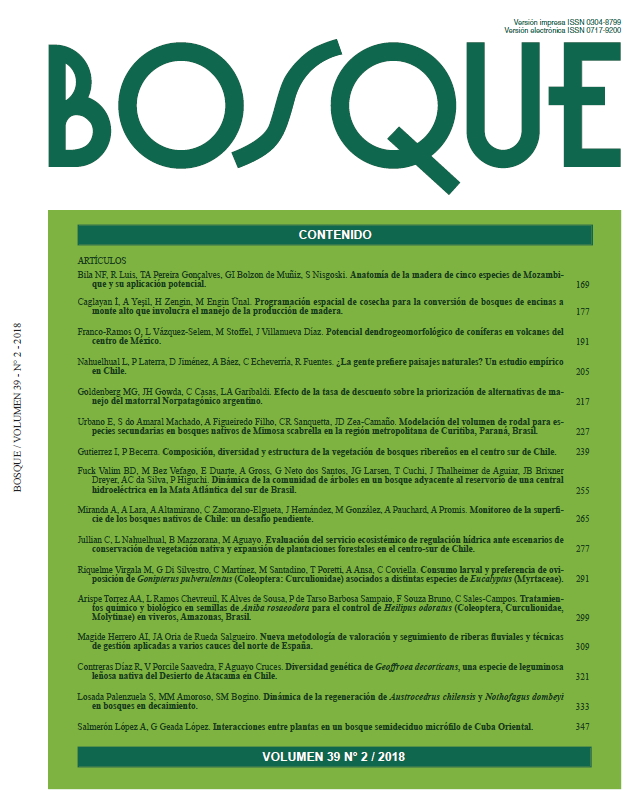Assessment of the ecosystem service of water regulation under scenarios of conservation of native vegetation and expansion of forest plantations in south-central Chile
Main Article Content
Abstract
Land use change (LUC) is one of the most conditioning biophysical factors in the hydric regulation although the magnitude of its effects has been little studied. The objective was to analyze the changes in the magnitude of the ecosystem service of water regulation under future scenarios of LUC at watershed scale, taking as case study the municipality of Panguipulli (Los Ríos Region, Southern Chile). The methodology was based on the Curve Number method applied through the ECOSER mapping protocol, which estimates the ability to regulate rainfall considering the type of vegetation and the physical characteristics of the soil. Modeling results showed that under a scenario A of increased old-growth forest cover (64 %), watersheds increase their capacity to regulate between 0.4 % and 7.1 %, while in a scenario of increased industrial forest (88 %), watersheds reduced their capacity to regulate between 0.3 % and 0.9 %, considering a single precipitation event in 24 hours. The watersheds with the largest increase in regulation capacity ( ͞x = 11.8 m3 ha-1) had a low initial area of native forest ( ͞x = 15 %), a large area of soil type A and B (40 %) and a smaller area of soil types C and D (21 %). The basins with the largest reduction in regulation capacity ( ͞x = 4.4 m3 ha-1) exhibited a low area of plantations ( ͞x = 5 %), a low area of soil type A and B (32 %) and higher area of soil type C and D (45 %). This information supports the need to focus land use planning efforts on watersheds most exposed to the expansion of plantations.

